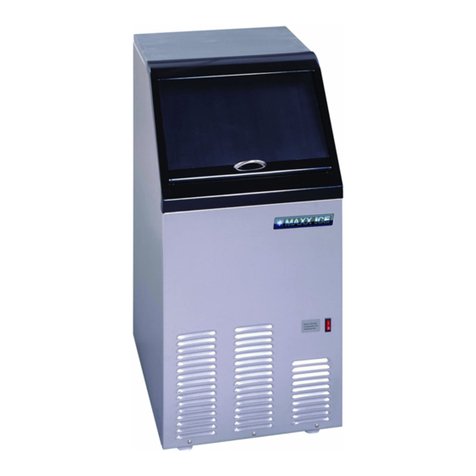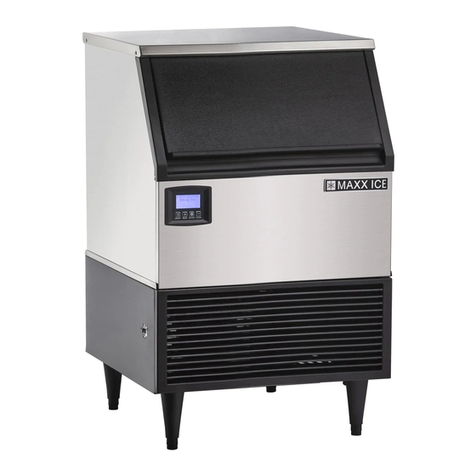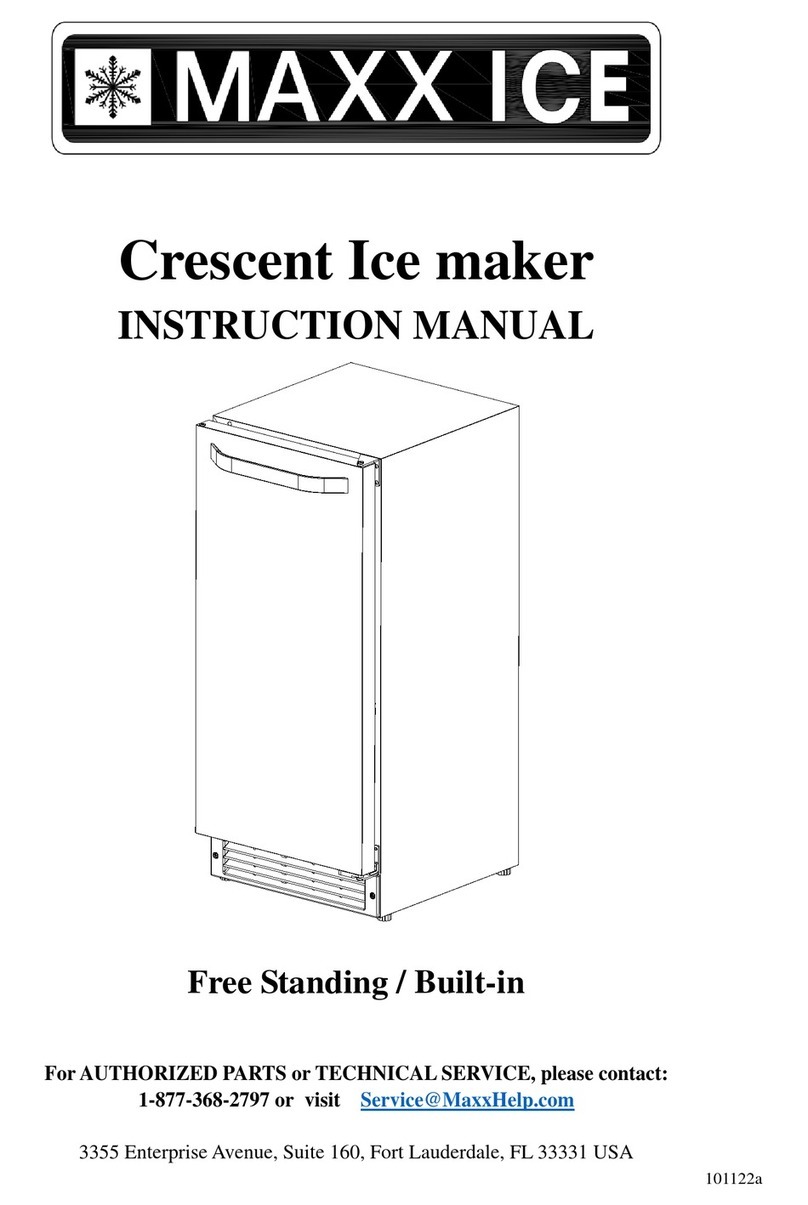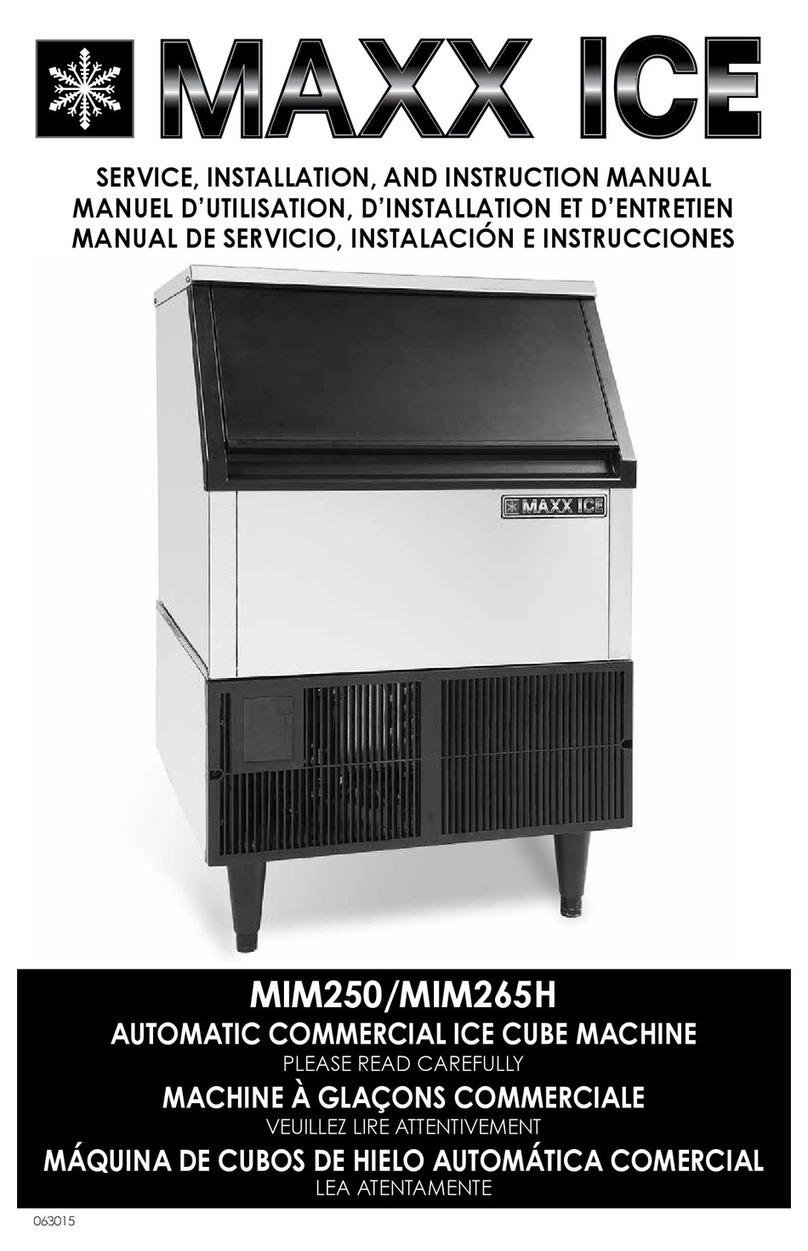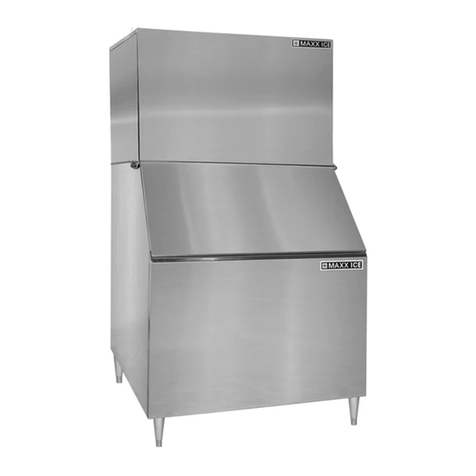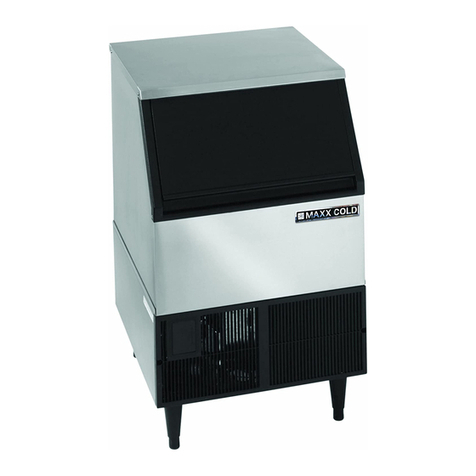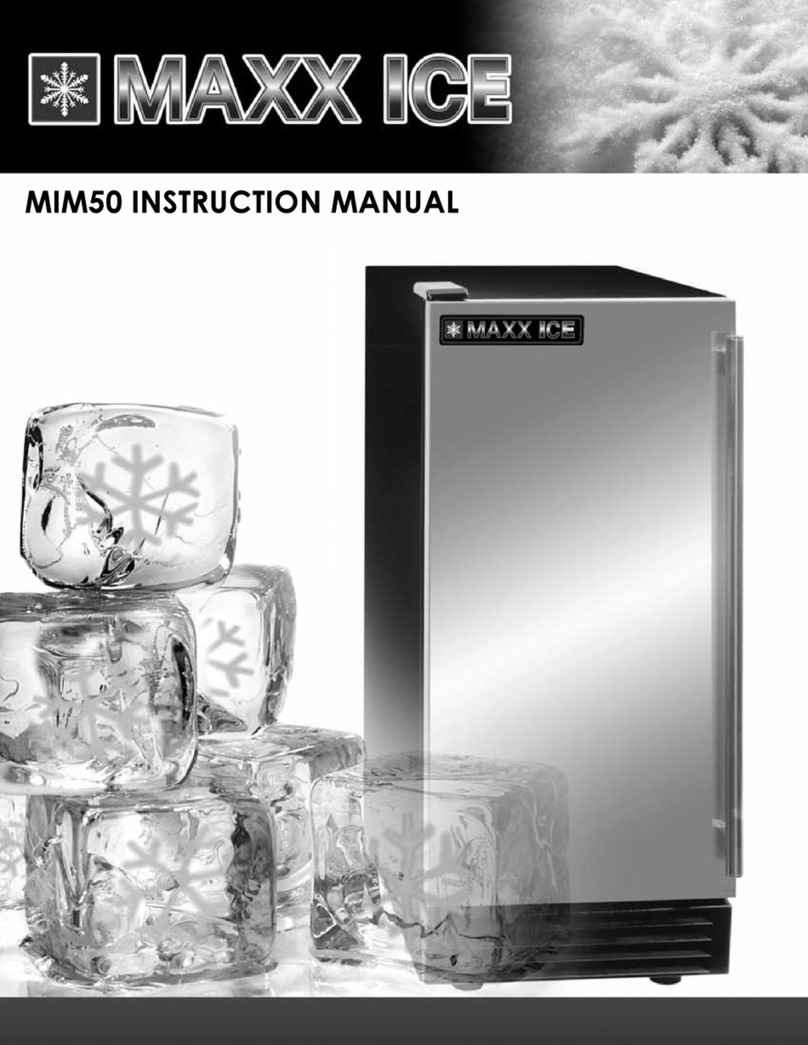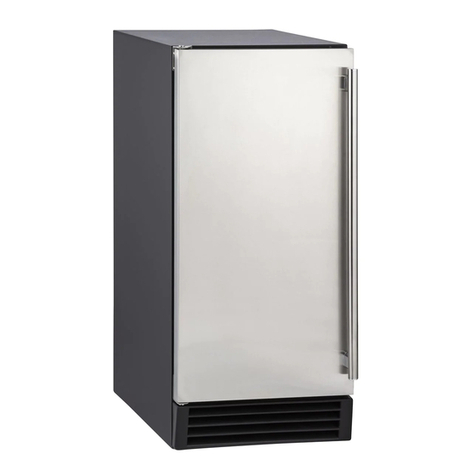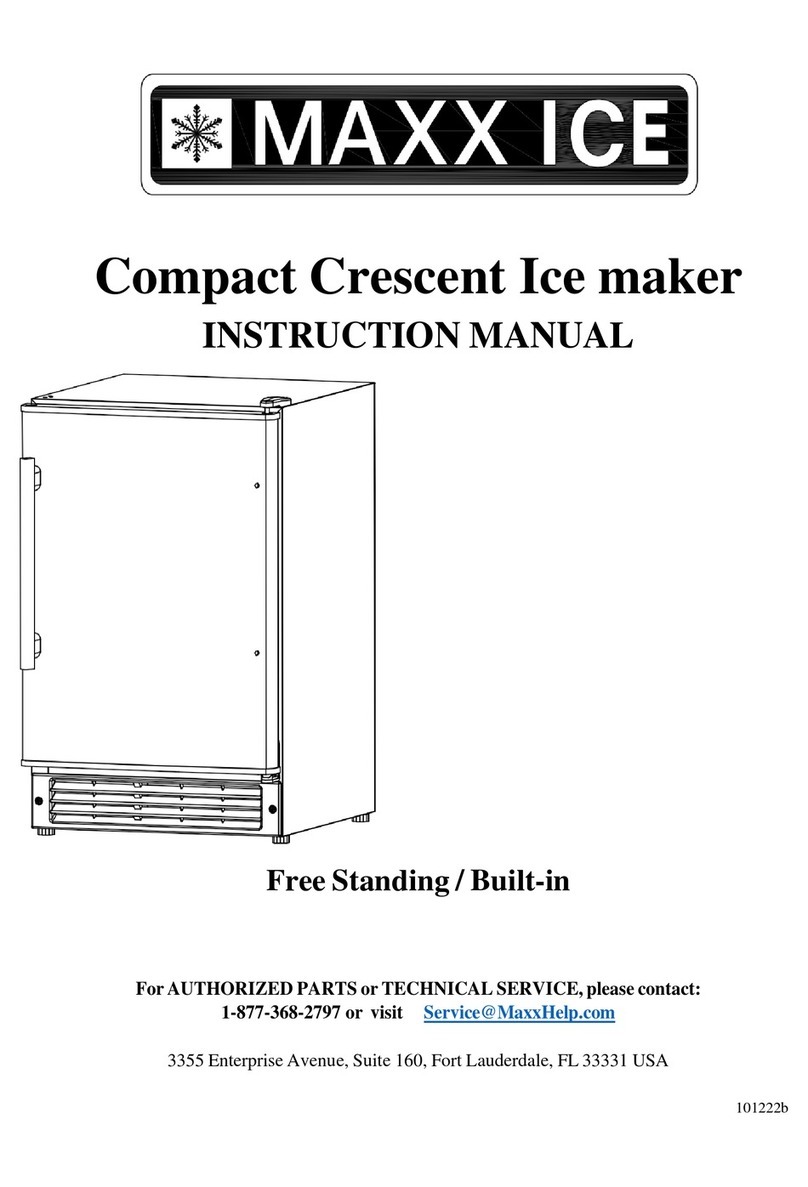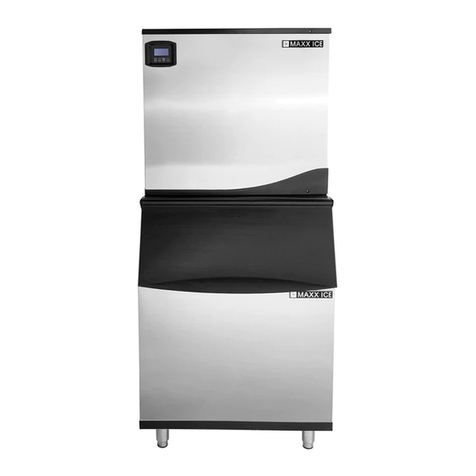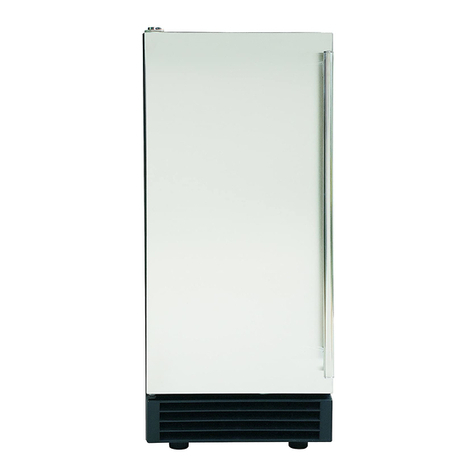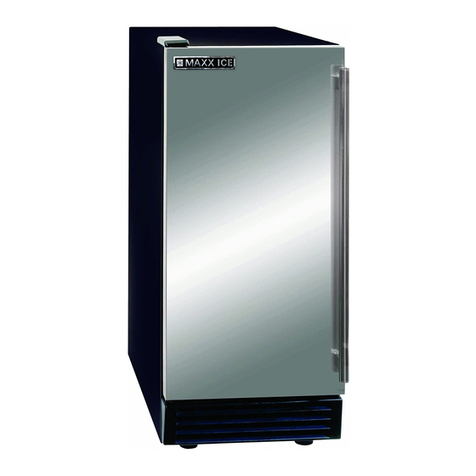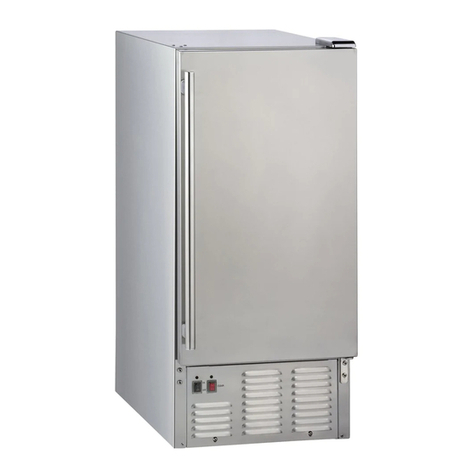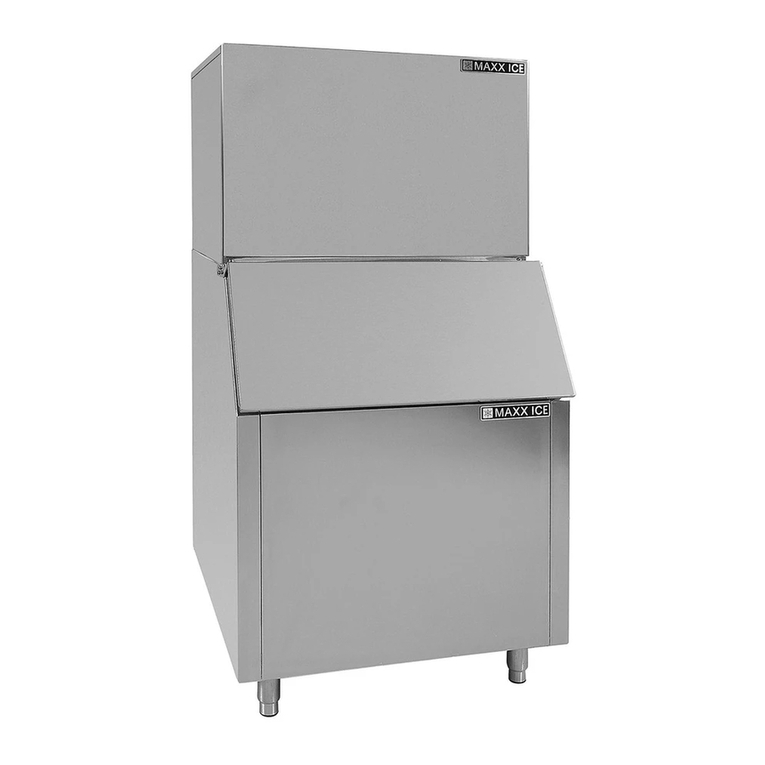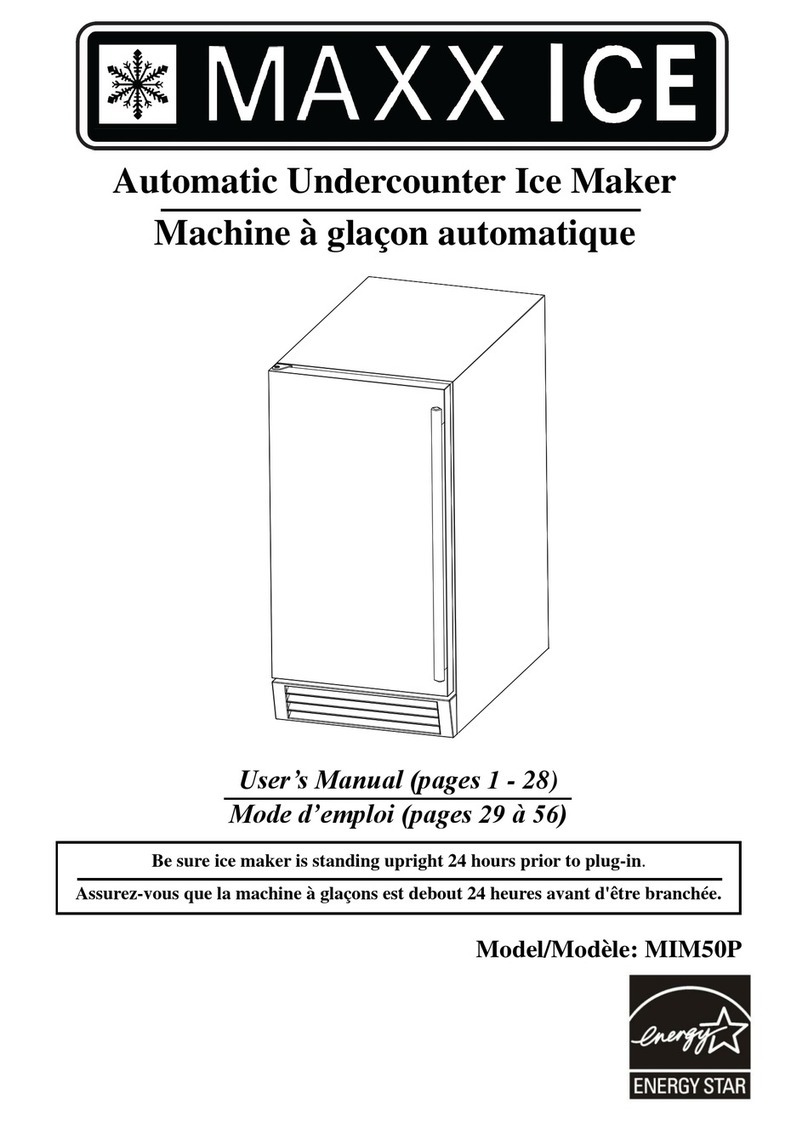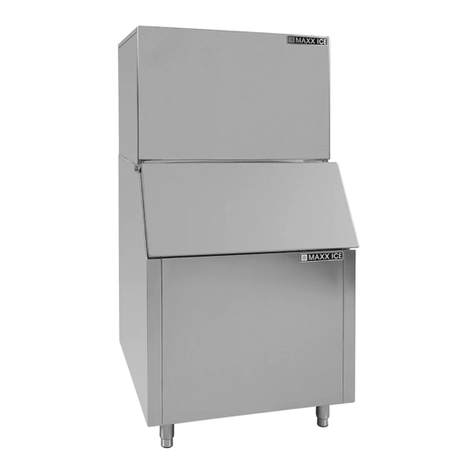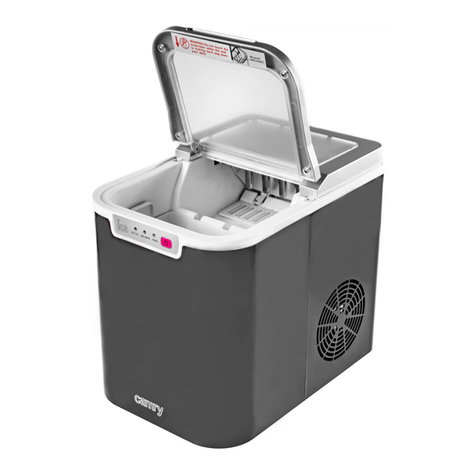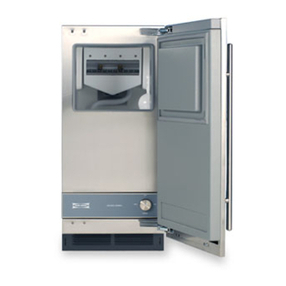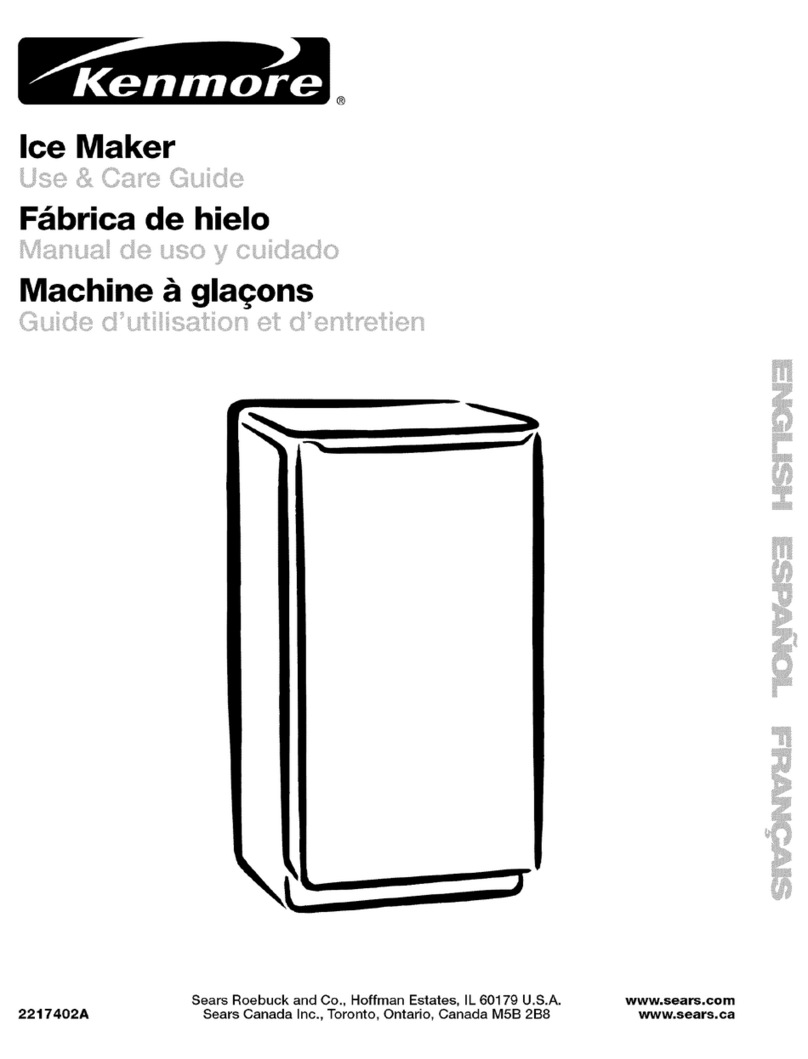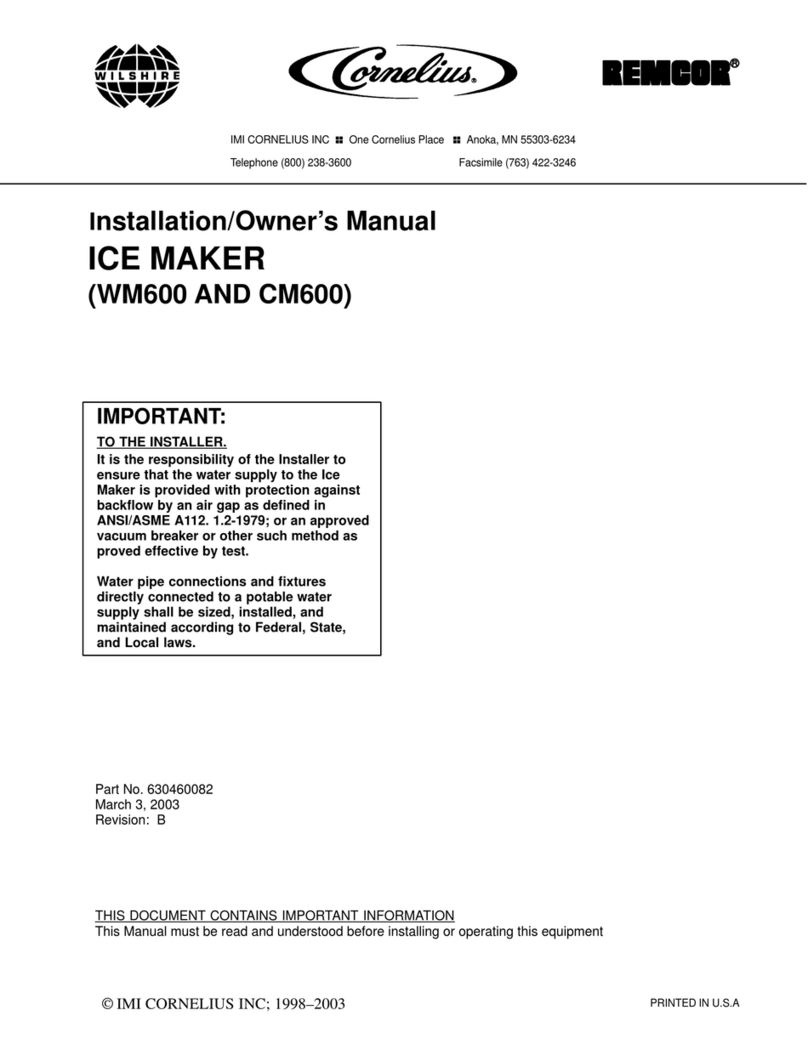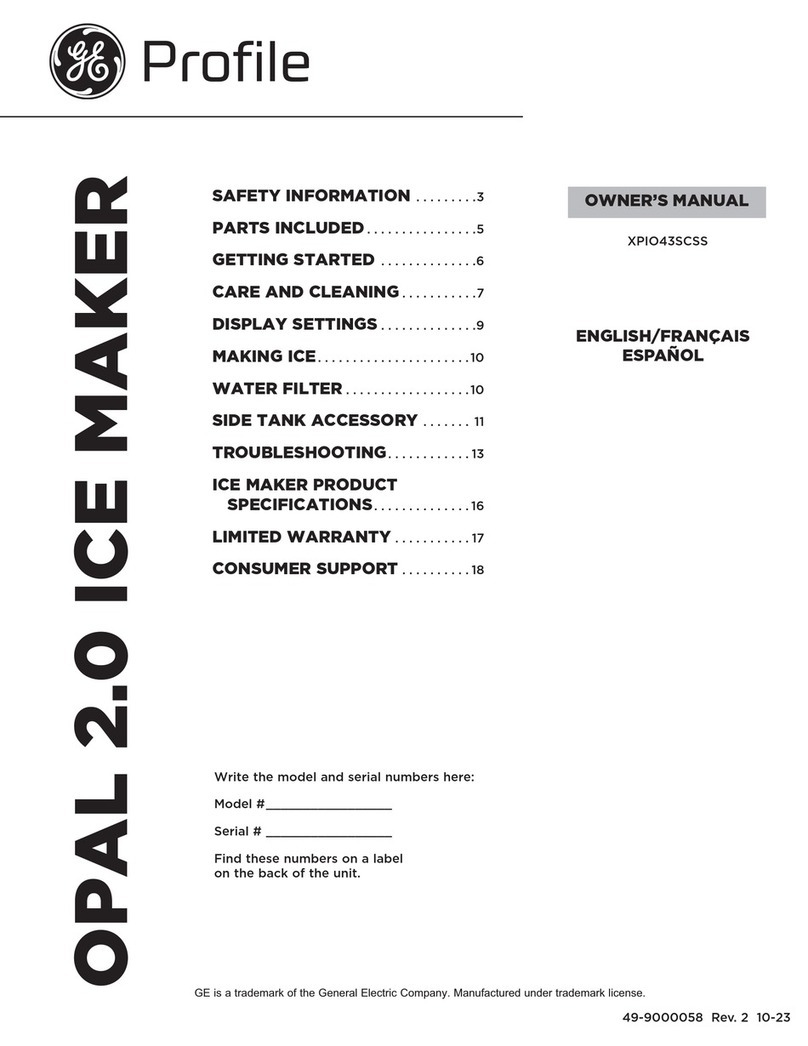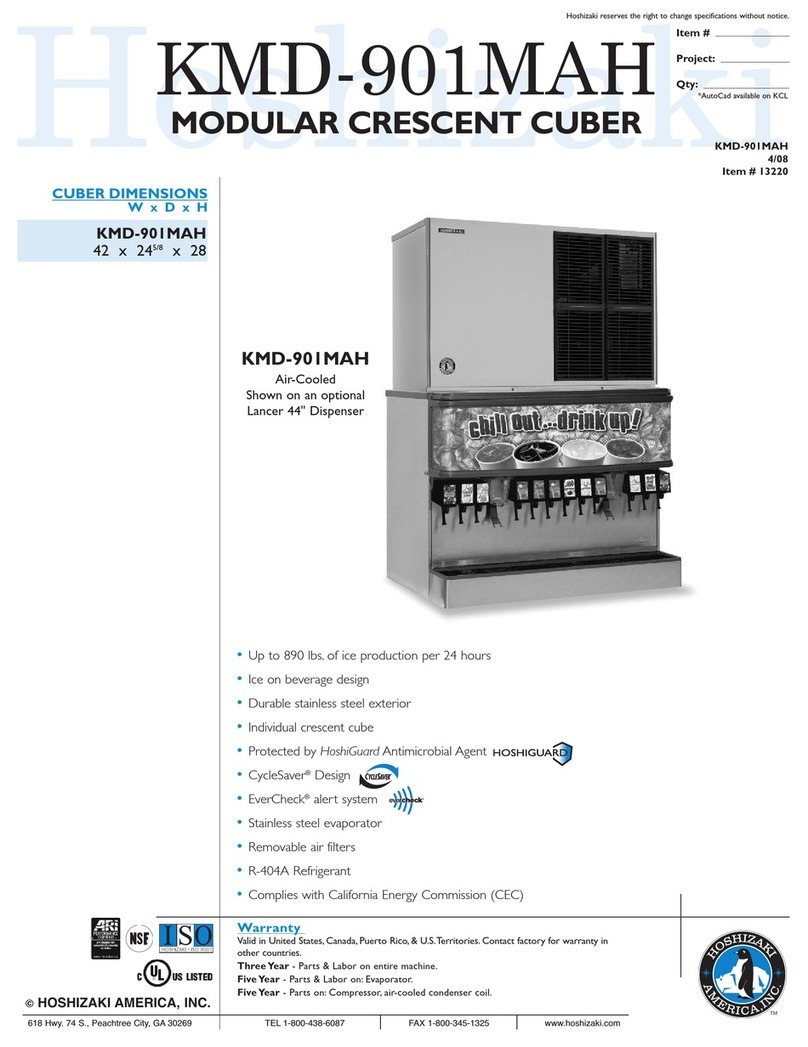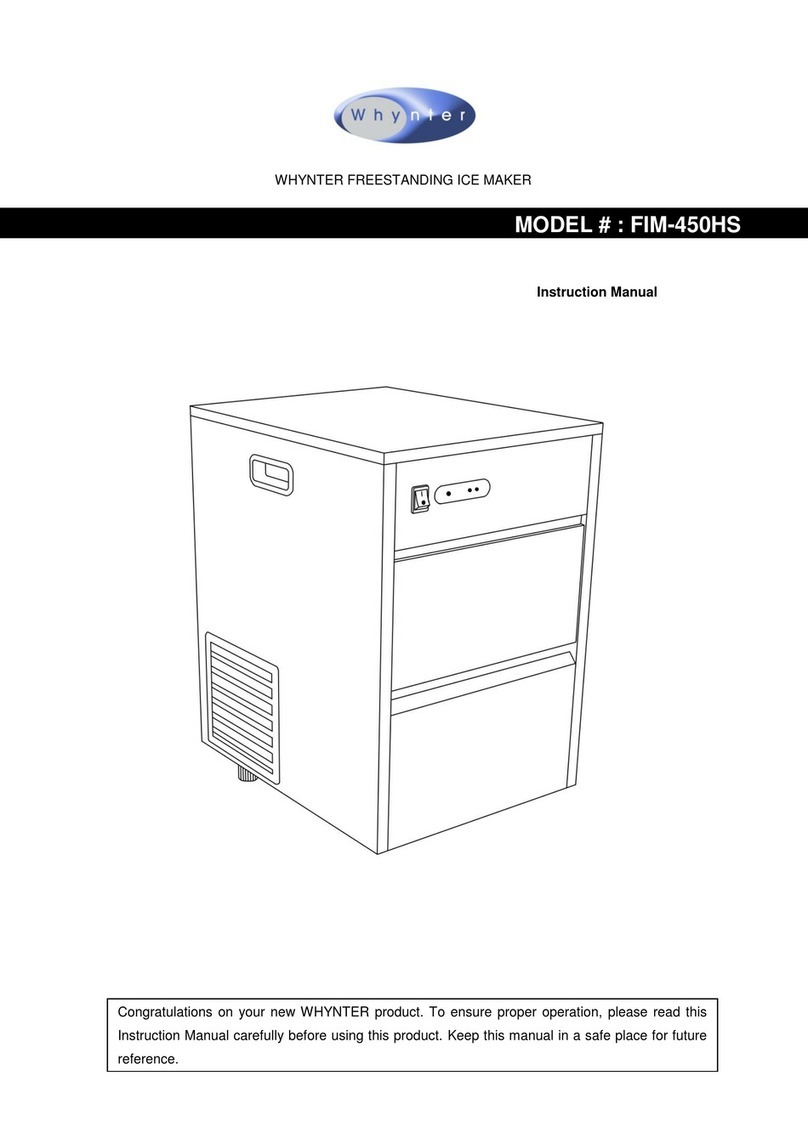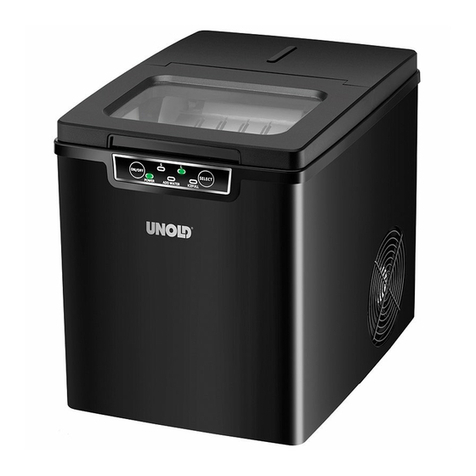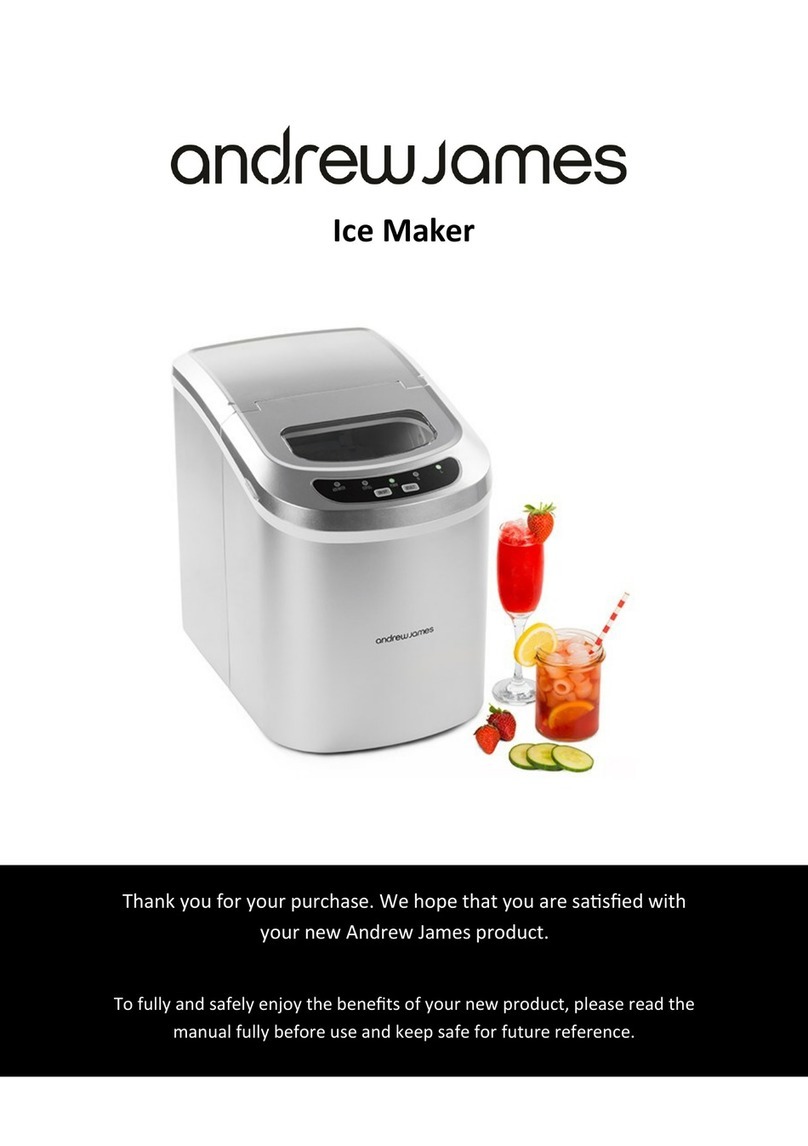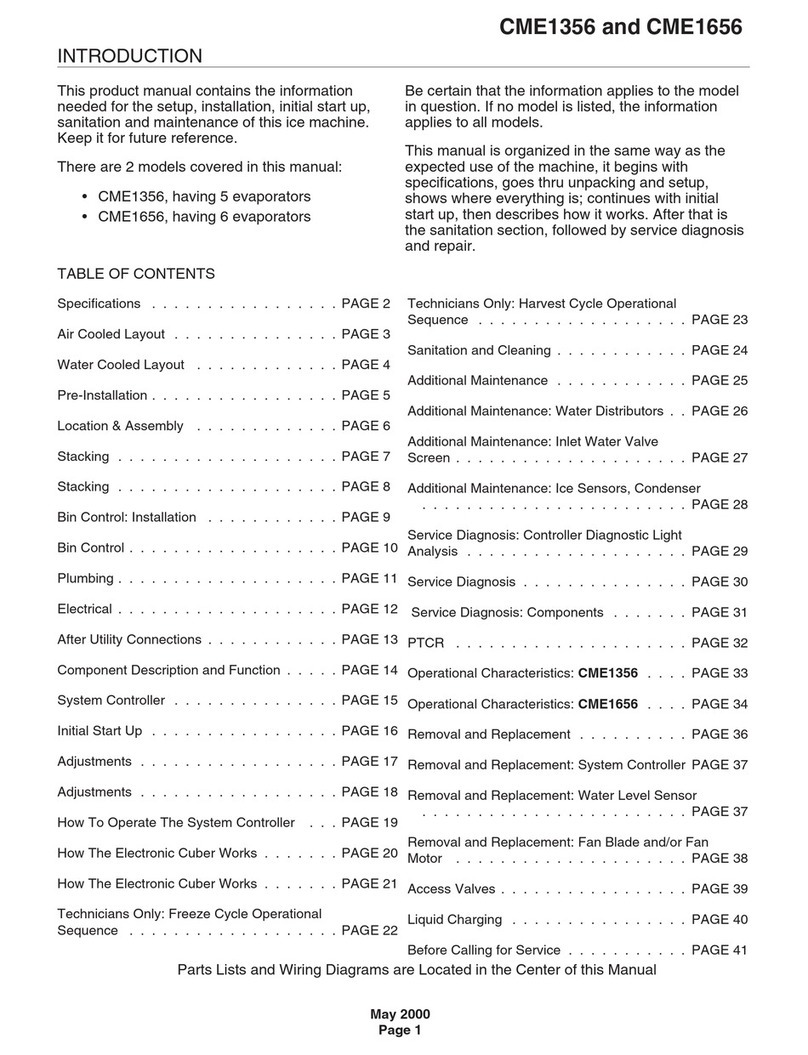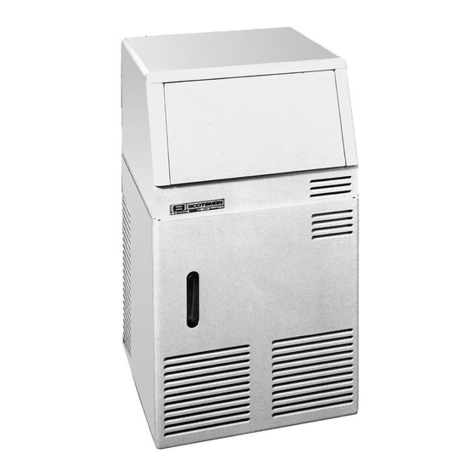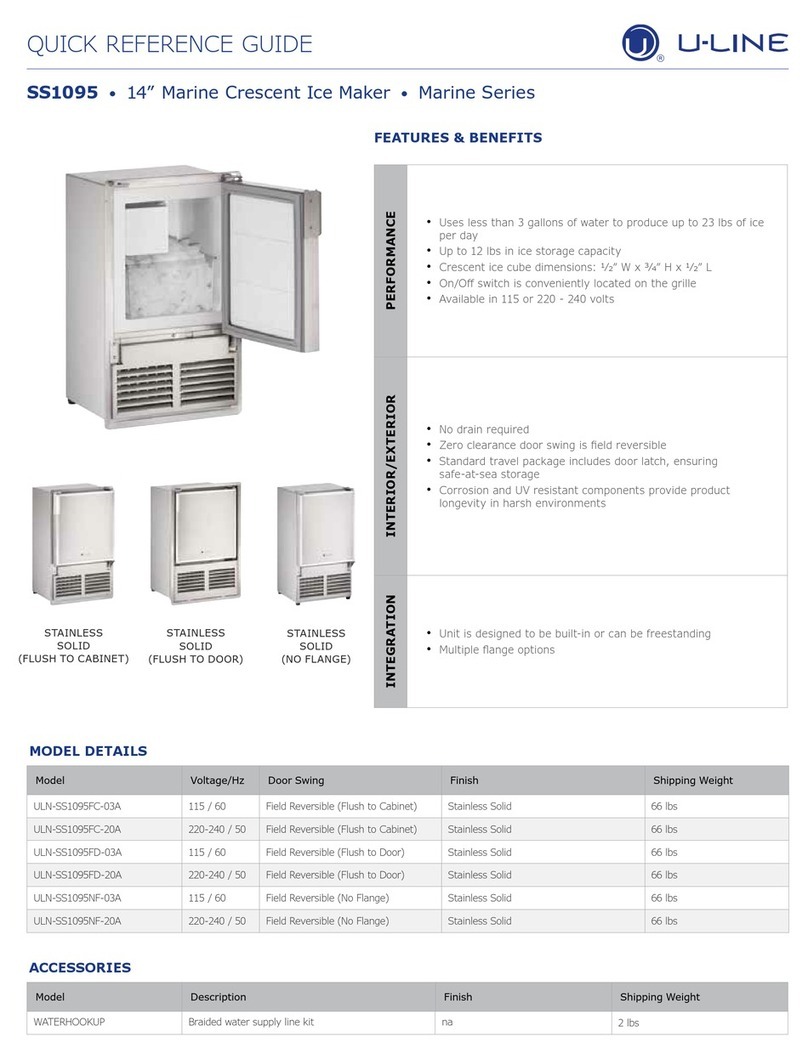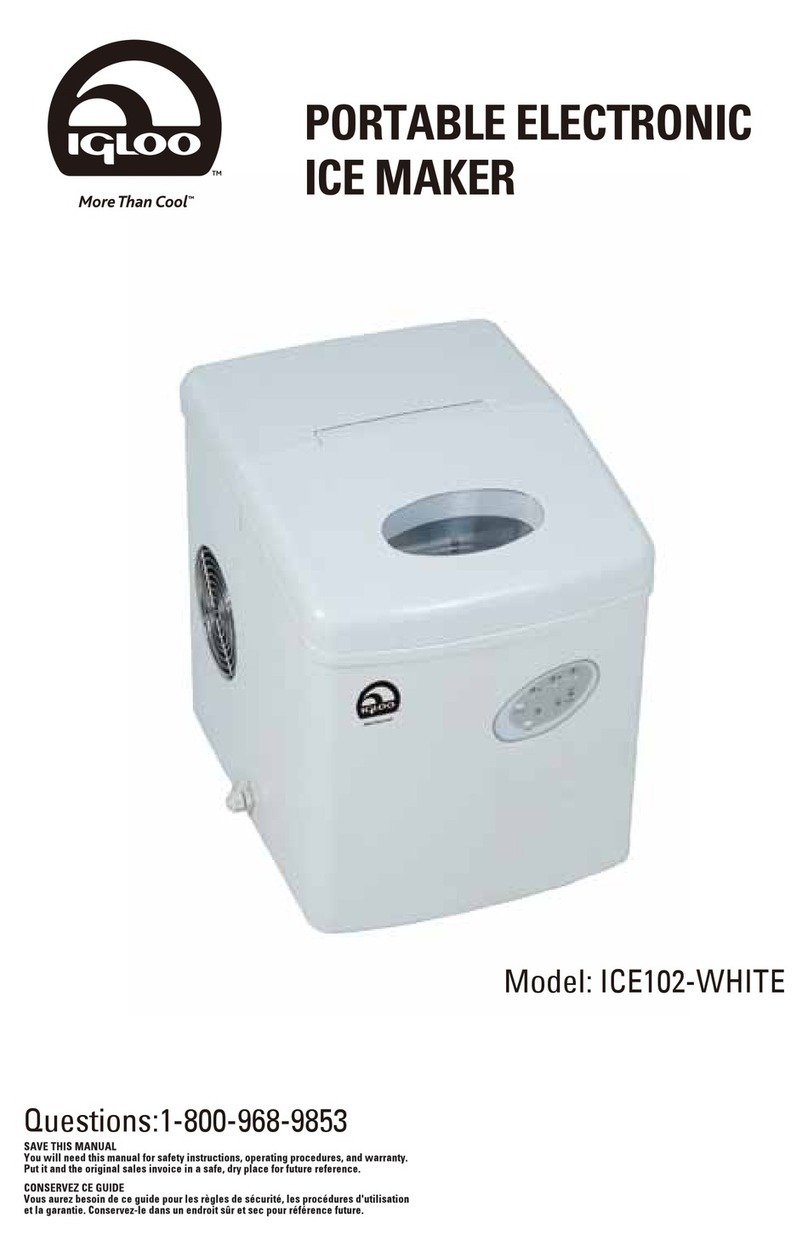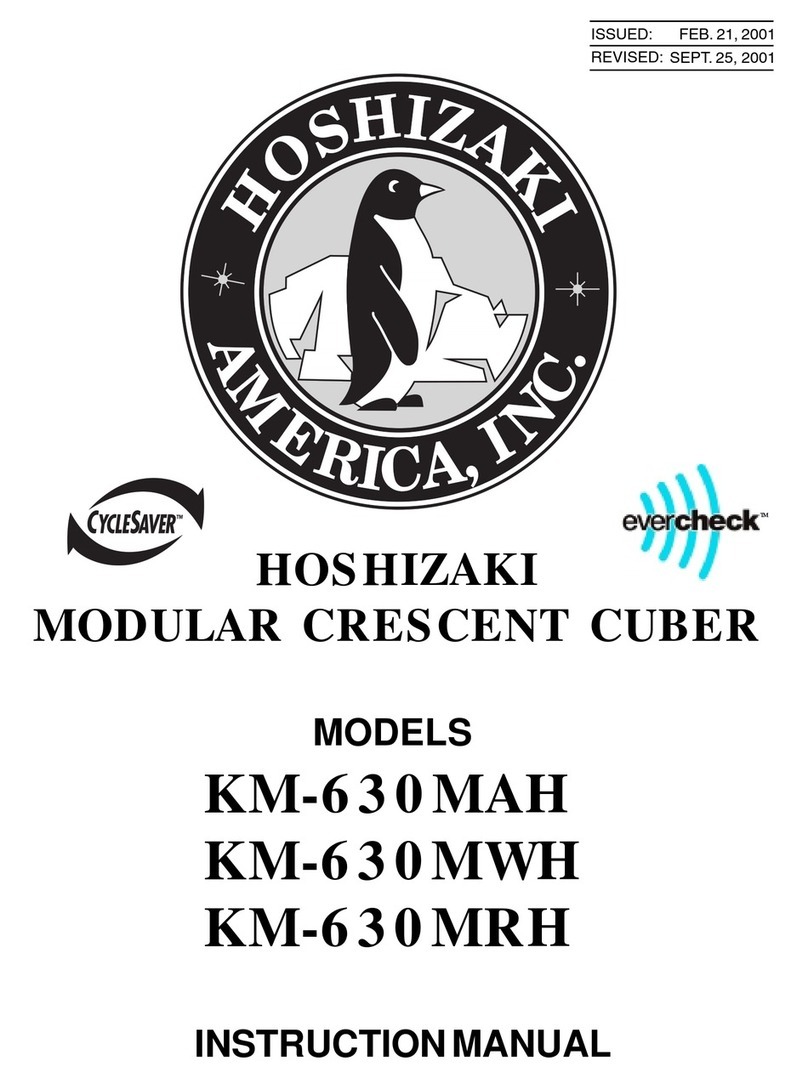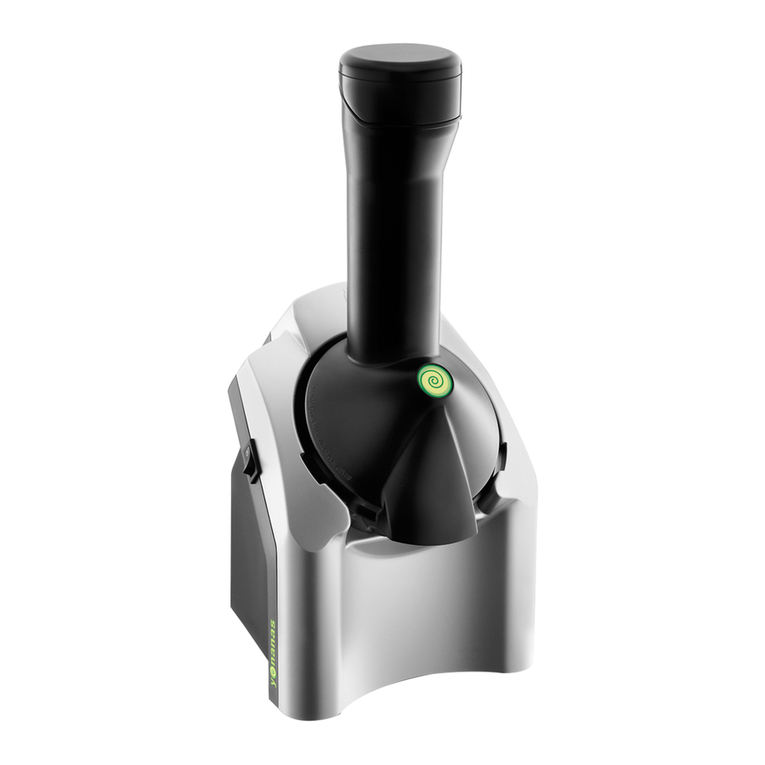
2
WARNING
• Use two or more people to move and install ice maker. Failure to do so can result in back or other injury.
• Never install or operate the unit behind closed doors. To ensure proper venlaon for your ice maker, the
front of the unit must be completely unobstructed. Choose a well-venlated area with temperatures above
50°F (10°C) and below 100°F (38°C). This unit MUST be installed in an area protected from the elements, such
as wind, rain, water spray or drips.
• The ice maker should not be located next to ovens, grills or other sources of high heat.
• The ice maker must be installed with all electrical and water connecons in accordance with state and local
codes. A standard electrical supply, properly grounded in accordance with the Naonal Electrical Code and local
codes and ordinances, is required.
• Do not kink or pinch the power supply cord between the ice maker and cabinet.
• The fuse (or circuit breaker) size is rated at 15 amperes.
• It is important for the ice maker to be leveled in order to work properly. Otherwise water may not ow properly
through the evaporator (ice mold). The ice producon will be less than normal. You may need to make several
adjustments to level it.
• All installaons must be in accordance with local plumbing code requirements.
• Make certain that hoses are not pinched, kinked or damaged during installaon.
• Check for leaks aer water line is connected.
• Although the unit has been tested and cleaned at the factory, due to long-term transit and storage, the rst
batch of cubes must be discarded.
• Remove the packing materials and clean the ice maker before using.
• Turn on the water supply tap before switching on the ice maker. Never turn the water supply tap o when the
ice maker is working.
• Except to take ice from the unit, keep the door closed in order to reduce ice melng and to promote proper ice
formaon.
• If the ice maker will not be used for a long me, before the next use it must be thoroughly cleaned. Follow
carefully, instrucons provided for cleaning. Do not leave any sanizing soluon inside the ice maker aer
cleaning. DO NOT use solvent-based cleaning agents or abrasives on the interior. These cleaners may transmit
taste to the ice cubes, or damage or discolor the interior. The ice machine cleaner contains acids. Do not use
or mix with any other solvent-based cleaners products. Use rubber gloves to protect hands. Carefully read the
safety instrucons on the container of the ice machine cleaner.
• Do not use the apparatus other than for its intended purpose.
• Do not touch the condenser ns, they are sharp and can be easily damaged.
Electrical Connecon
Do not, under any circumstances, cut or remove the third (ground) prong from the power cord. For personal safety, this
appliance must be properly grounded. The power cord of this appliance is equipped with a 3-prong grounding plug that
mates with a standard 3-prong grounding wall outlet to minimize the possibility of electric shock hazard from the appliance.
Have the wall outlet and circuit checked by a qualied electrician to make sure the outlet is properly grounded. When
a standard 2-prong wall outlet is encountered, it is your responsibility and obligaon to have it replaced with a properly
grounded 3-prong wall outlet. The ice maker should always be plugged into its own dedicated electrical outlet which has
a voltage rang that matches the rang label on the appliance. This provides the best performance and also prevents
overloading house wiring circuits which could cause a re hazard from overheated wires. Never unplug your ice maker by
pulling on the power cord. Always grip the plug rmly and pull straight out from the outlet. Repair or replace immediately
all power cords that have become frayed or otherwise damaged. Do not use a cord that shows cracks or abrasion damage
along its length or at either end. When moving the ice maker, be careful not to damage the power cord.
Extension Cord
Because of potenal safety hazards under certain condions, it is strongly recommended that you do not use an
extension cord with this ice maker.
